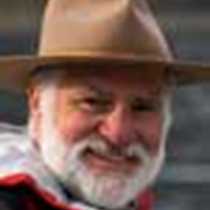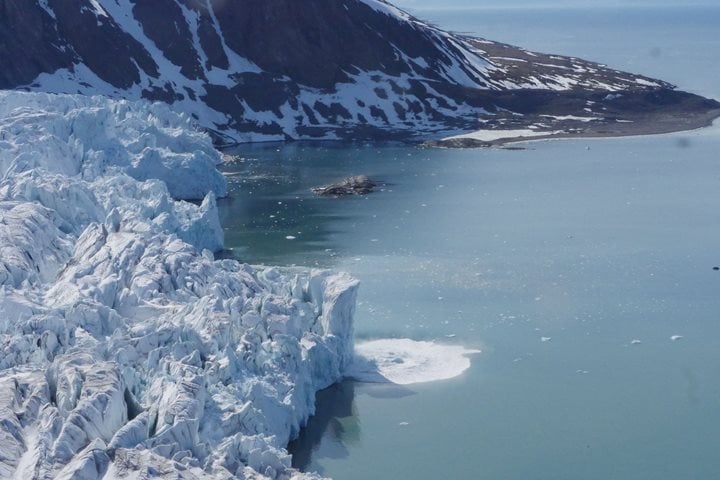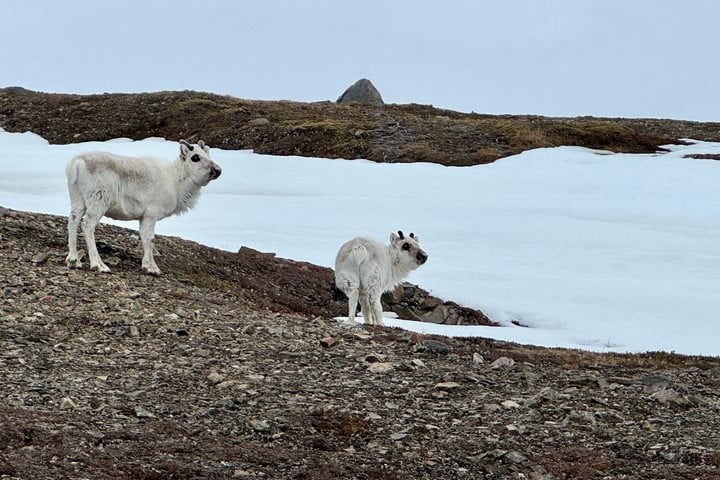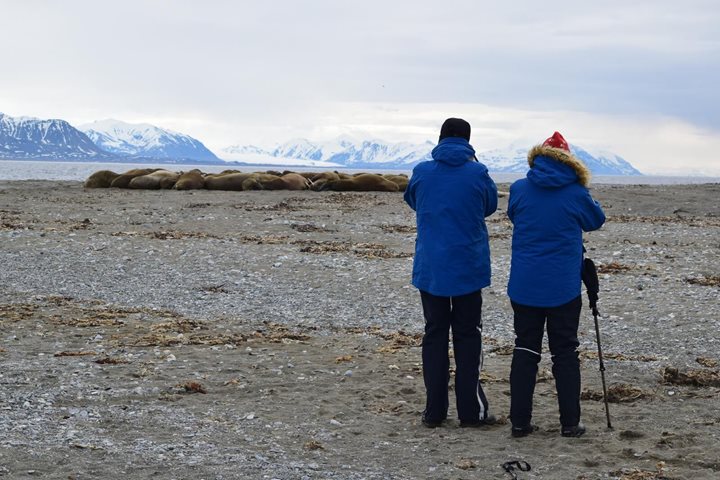We hardly had time to catch our breath from our adventures up in the ice north of Svalbard when we received the early morning wake up call. We were told that the day was sunny and that the ship was close to Alkefjellet, the impressive bird cliffs on the northeastern coast of the island of Spitsbergen along the coast of Hinlopen Strait.
It was indeed a spectacular morning, the skies were blue, the sun shinning brightly and just ahead of us the impressive bird cliffs. Even at this distance, and with the help of binoculars, it was possible to discern the skies filled with birds in flight. The captain expertly maneuvered the ship close to the cliffs and gently steered her along the face. It is difficult to comprehend what we witnessed for the next 45 minutes. Thousands of birds clamoring and busily going about the business of breeding, Brünnich’s guillemots seemingly clinging precariously to the narrowest ledges and black-legged kittiwakes further up sitting on nests. It belies belief. With our heads reeling we wander down for breakfast.
The ship travels a short distance for Palanderbukta, which is to be our morning destination. Once ashore the starkness of the landscape surprises us. We land on a beach which gives rise to a stony landscape that stretches out before us in every direction. There are patches of snow on the slopes and a few green areas. Soon enough we head off on the different walks, and we are all surprised at how many lichens and flowering plants are eking out a living here, we see purple and tufted saxifrage, roseroot, polar mouse-ear, whitlow grass, as well as mosses in the damp areas and lichens everywhere. We also come across circular stone rings, with smaller stones in the middle and larger ones on the borders. The freezing and thawing of the water above the permafrost layer cause these features and the edges tend to also have more plants as it is there where more moisture gathers.
Most of us also make it over to a dead polar bear. We walk up with an air of respect as we immediately are taken by the size of the paws, now reduced to bare bones. The skull, still covered with skin, impresses as well, especially the immense sharp canine teeth. There is no way to know how it might have died, maybe an avalanche or more likely starvation.
The ship sails into Wahlenbergfjorden and we are all amused by two walrus hauled out on a ridiculously small bit of ice, in the end sliding off into the water. It is, in some way, an illustration of climate change. A few minutes later a polar bear is spotted ashore walking over the snow-free slopes. Somehow it seems incongruous to see this magnificent marine mammal walking over stony slopes. The surrounding scenery under clear blue skies and warm sunshine is breathtaking and many of us just remain on the decks soaking it all in.
Just before teatime we hear an announcement that another polar bear has been sighted, but this time on a kill! The ship slowly skirts around the large piece of sea ice to get closer to the bear. The sea ice has thinned and there are many patches of water on the surface, we all know that this piece of ice will not last much longer. Dotted about in the distance we can see a number of seals, one of their number has become a victim of the feeding bear. There are a number of gulls hovering around trying to get some of the spoils, these include ivory gulls, resplendent in their white finery. We notice that the bear is actively burying the kill by scooping snow and ice with its paws. At one point it flops down, maybe to get some digestion done, before returning to piling more ice and snow over the carcass. It becomes evident that the kill was made very close to the water’s edge and then dragged to its present location. Gulls are feeding on the tidbits left behind.
Tonight’s dinner is a very special event as it is Swedish midsummer and we will be able to sample a typical meal to celebrate this occasion accompanied with Norwegian beer and Swedish schnapps, aquavit, which like whiskey is the water of life. It is a splendid meal and a lot of fun.
There is still one more surprise in store for us. Just after dinner we are informed that we have reached Brasvellbreen, an ice shelf that spills off the ice cap on the east side of Nordaustlandet. It is the third largest icefield on the planet after Antarctica and Greenland. We marvel at the blues and whites, the crevasses and the waterfalls, which come from the melting snow on the surface.
The day has been incredible, our senses are just as packed as the memory cards of our cameras, and after a nightcap we fall into bed to get some rest knowing that tomorrow the pace may be just as relentless. There is little doubt that the scenery and life of this place will continue to surprise us.









